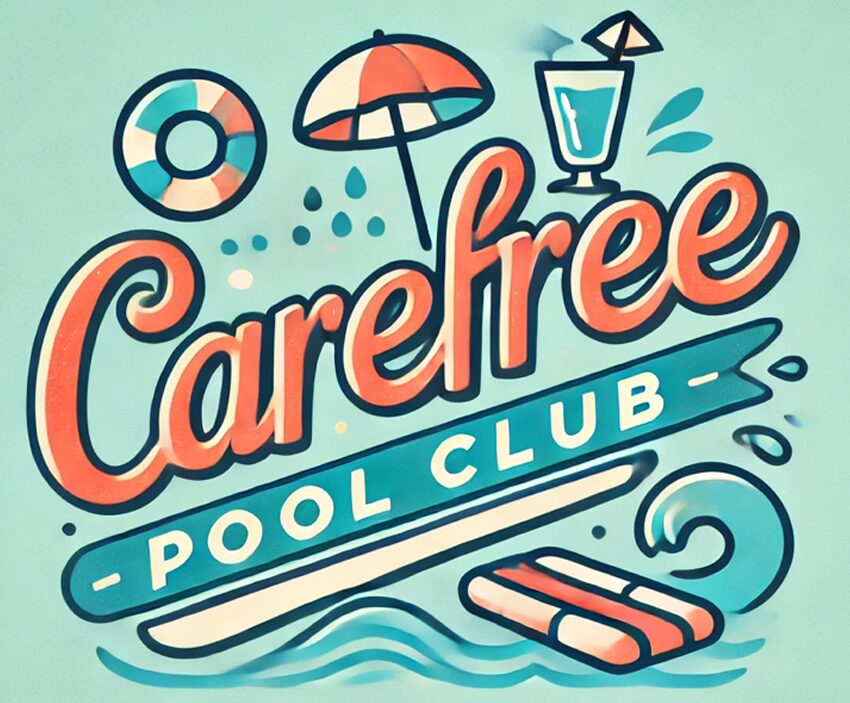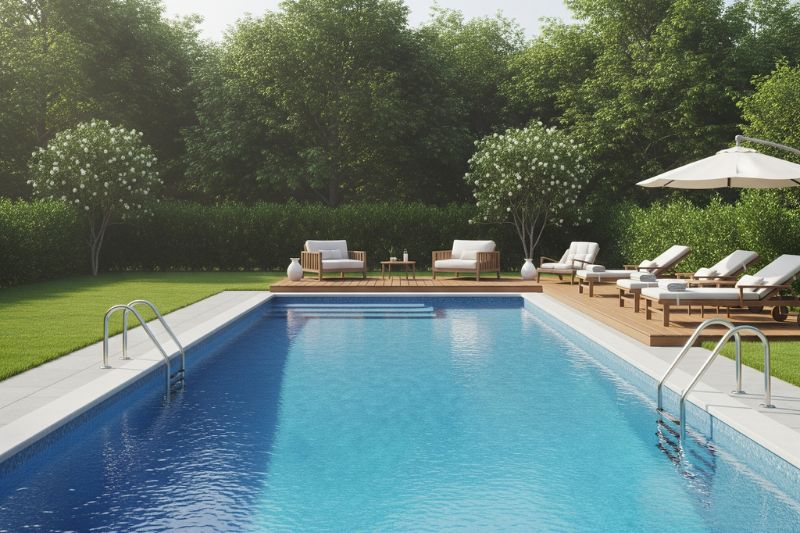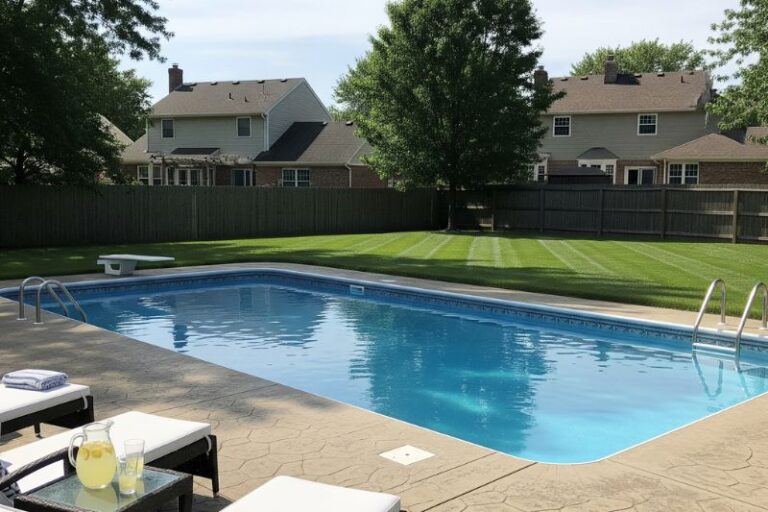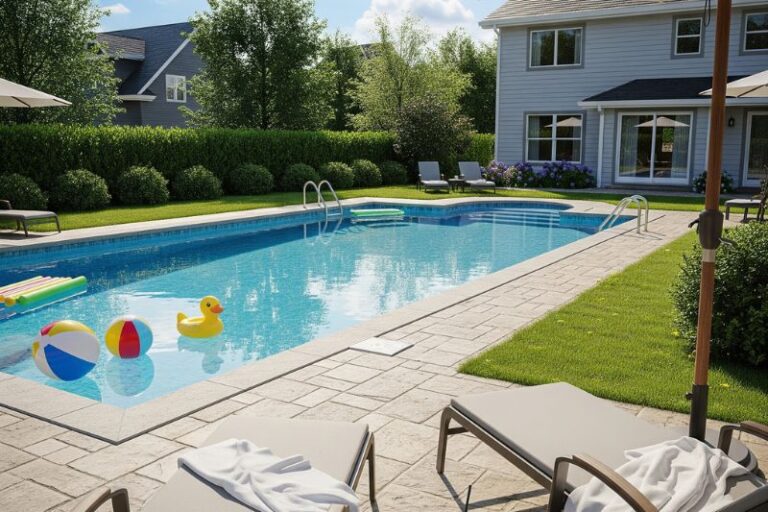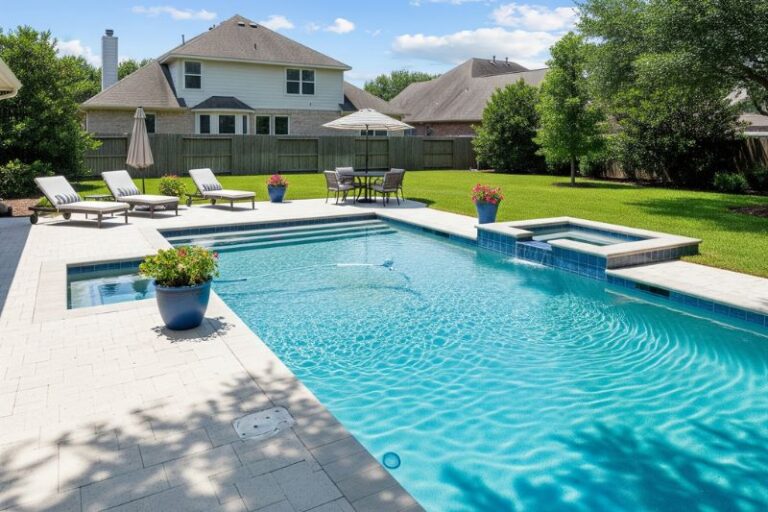Oh, so you think your pool is just “thirsty,” right? Maybe you even convinced yourself it is just evaporation. Spoiler: it is not. That steady drop in water level is your pool waving a white flag and screaming that it has a leak. The worst part? You are probably making the situation worse with some bad habits.
Mistake 1: Blaming Evaporation for Everything
Look, unless you live in the desert and it is 110 degrees, your pool does not lose an inch of water every day naturally. That daily drop is a leak in disguise.
- Normal evaporation is about 1/4 to 1/2 inch per day in hot weather.
- If you are refilling more than twice a week, you need to investigate.
- Use a bucket test: Fill a bucket with pool water and set it on the step. Mark the water levels in the bucket and the pool. Compare after 24 hours. If the pool drops more than the bucket, you have a leak.
Ignoring this mistake means higher water bills and more chemical costs. Every refill dilutes your pool chemistry.
Mistake 2: Skipping Regular Inspections
Your pool is not self-healing. Small leaks turn into major repairs when ignored.
- Walk around your pool weekly.
- Check for wet spots or soft ground around the pool.
- Inspect skimmer boxes, return lines, and light niches.
Most homeowners assume if the water is still blue, everything is fine. Meanwhile, your pool is secretly creating a swamp under your deck.
Mistake 3: Thinking Chemicals Fix Structural Problems
Dumping in more shock or algaecide will not seal a leak. Chemistry cannot fix cracks.
- Check the tile line and steps for hairline cracks.
- Inspect around fittings like ladders, returns, and lights.
- Use a leak detection dye test around suspicious spots.
Throwing chemicals at a leak is like spraying perfume in a burning kitchen. It smells better, but the fire is still there.
Mistake 4: Ignoring Equipment Pad Leaks
Sometimes the leak is not in the pool but at the equipment pad.
- Check around the pump, filter, and heater for dripping water.
- Look under valves and fittings for small puddles.
- Tighten connections or replace worn-out O-rings.
A leaky backwash line or pump seal can drain hundreds of gallons without you realizing it.
How to Stop Playing the Waiting Game
Your pool will not magically stop leaking. Here is how to get proactive:
- Confirm the leak with a bucket test.
- Check equipment and fittings for visible leaks.
- Hire a professional leak detection service if the problem is hidden.
- Fix it fast to prevent deck damage and extra water bills.
If you are tired of topping off your pool every morning, face it head-on. Finding and fixing a leak now is cheaper than ignoring it until your backyard turns into a mud pit.
Quick Leak Check Checklist
- Monitor daily water loss with a bucket test.
- Inspect the pool shell, tile line, and fittings weekly.
- Check equipment pad for leaks or puddles.
- Stop wasting chemicals and water with quick fixes.
- Call a pro before a small leak becomes a major repair.
Your pool is not being dramatic. That dropping water level is proof you have a leak, and it is your move.
